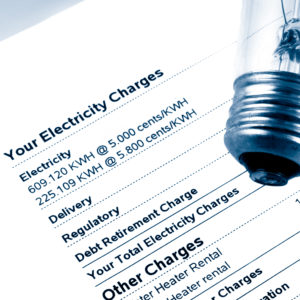Voters in Arizona, Nevada and Washington state will soon decide if they want to pay more for less reliable electricity.
Progressive California billionaire Tom Steyer is trying to take California’s energy policies on the road. California energy prices are among the highest in the country, and Golden State residents suffer more non-disaster-related blackouts and brownouts than any other state. In a vain effort to control the weather 100 years into the future, California has adopted policies that restrict fossil-fuel use and severely limit residents’ energy choices. The result: high energy prices and unreliable electricity that works only when the sun and wind cooperate.
At a time when residents and businesses are fleeing California to seek more affordable energy and homes, California is now trying to export its misguided energy policies beyond its borders.
This November, voters in Arizona and Nevada will consider ballot proposals that would mandate an increase in the proportion of electricity generated from renewable power sources to 50 percent by 2030. Both measures are bankrolled by Steyer.
Additionally, Washington state voters, for the second time in three years, will consider a ballot initiative to impose the nation’s first tax on carbon-dioxide emissions.
The plain truth is, if voters approve these initiatives they will be paying higher prices for energy with little or no environmental benefit. Numerous studies have revealed that states with renewable energy mandates have experienced increased energy prices. The Brookings Institution found replacing conventional power with wind power raises electricity prices by 50 percent. Even worse, replacing conventional power with solar power triples electricity costs. In short, the higher the mandate, the higher the costs.
Europe is further along the renewable energy path than the United States, and the results are telling. Despite a 25 percent increase in wind power and 6 percent growth in solar over the past decade, carbon emissions actually increased in 2017, by 1.8 percent, due to the fact that “idling fossil fuel plants must be quickly brought online when the wind doesn’t blow and the sun doesn’t shine, and, just like cars in traffic, idling engines produce more carbon emissions,” as reported by Nevada’s Sparks Tribune. Meanwhile, electricity costs across the European Union have increased by 23 percent during the past decade.
The same is true in the United States. Under its current renewable power mandate, Arizona produces 7 percent of its energy from wind and solar, an amount required to increase to 15 percent by 2025. The Energy Information Administration reports that meeting the current 7 percent requirement has already added $304 a year to the average Arizonan’s electric bill — meeting the 50 percent standard proposed in Steyer’s ballot initiative could cost Arizona residents an additional $2,100 annually.
The results are the same for Nevada. Over the last five years, the average Nevadan saw his or her electric bill rise by 11 percent, despite that nationally rates fell on average by 1 percent — and declined even more in states without green-energy mandates. This is due in part to Nevada’s existing renewable energy mandate.
A 2013 study commissioned by the Nevada Policy Research Institute showed that simply meeting the current requirement (utilities get 25 percent of the electric power they supply by 2025) would likely raise power prices by an additional 11 percent. This would also cost the state more than 3,000 jobs. Requiring 50 percent renewable energy just five years later, after the low hanging “inexpensive” power switching as already been accomplished, will make rates and job losses skyrocket even further.
Washington state’s carbon-dioxide tax would impose a penalty of $15 per metric ton on carbon-dioxide emissions, rising $2 per ton annually until the state meets its goal of reducing emissions 50 percent below 1990 levels. Evergreen State auditors found residents would pay approximately $2.2 billion more in taxes during its first five years of implementation, with gasoline prices likely to rise by 13 cents per gallon and the costs of home-heating oil likely to rise by 15 cents per gallon in 2020, the year the tax would take effect.
The higher energy prices and increased energy instability will be for naught with regards to preventing global warming. The United States is already reducing its emissions without such draconian policies, but even if it weren’t, nothing done in the United States can prevent a global rise in emissions because developing countries are adding huge amounts of carbon dioxide into the atmosphere as they industrialize.
Only the IRS, politicians and climate fanatics could love these high-cost, no-return ballot initiatives. Let’s hope Arizona, Nevada and Washington state residents see through the green smokescreen the ballot initiatives’ advocates are emitting.

